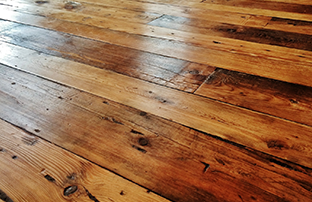


ENVIRONMENTAL BENEFITS
Sustainable for future generations.
Wood floors are the most environmentally friendly flooring option available. Unlike other flooring materials, the raw materials used to make them – trees – can regrow after they are cut down, which replaces the material that is harvested. In the United States, the hardwood forests that provide flooring products are growing more than twice as fast as they are being harvested. Although it usually takes hardwood trees about 40 to 60 years to mature (depending on the species), wood flooring can last well beyond 100 years in service when properly maintained. Wood also stores carbon during its service life. This means any manufactured wood product – furniture, cabinets, wood floors, or even picture frames – continues to store carbon as a manufactured end-product. That’s why wood flooring is classified by the U.S. Department of Agriculture (USDA) as a carbon neutral product.
Wood floors reduce the amount of waste in our landfills because they can last for many generations and require fewer raw materials to produce than other flooring options. There are a number of environmentally friendly options for disposing of wood floors at the end of their service life. Wood floors can be recycled into other materials. Wood is combustible, which means it can be used as fuel or as a heating source. Finally, if the wood does end up in the landfill, it is biodegradable, which means it will decompose. This ultimately reduces its volume of landfill waste.
One of the best ways to reduce landfill waste with wood is to utilize it for reclaimed flooring. This is a process where old wood is used to make new wood flooring. Reclaimed wood can come from a variety of sources, including wood salvaged from old barns or factories, and logs recovered from river and lake bottoms. Flooring made from reclaimed wood is truly unique and displays significant history and character. See the photo on the right below for inspiration.